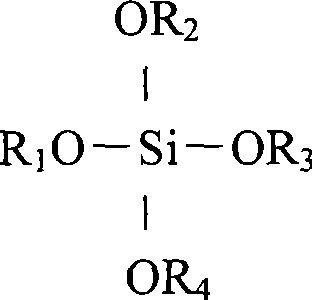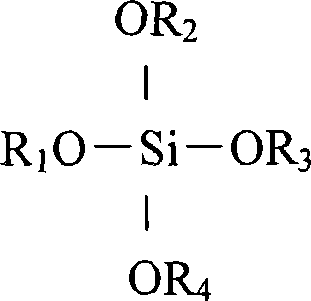Method for preparing p-xylene and co-producing light olefins by toluene and methylating reagent
A technology for paraxylene and methylation, applied in chemical instruments and methods, molecular sieve catalysts, production of bulk chemicals, etc., can solve problems such as differences in catalyst characteristics, complicated operations, catalyst deactivation, etc., and achieve stable catalyst activity and process. The effect of simple process and easy large-scale industrialization
- Summary
- Abstract
- Description
- Claims
- Application Information
AI Technical Summary
Problems solved by technology
Method used
Image
Examples
Embodiment 1
[0047] (1) ZSM-5 zeolite molecular sieve raw powder (SiO 2 / Al 2 o 3 =68) Calcinate at 550°C to remove template agent, exchange 4 times with ammonium nitrate solution in 80°C water bath, dry in air at 120°C after exchange, and roast at 550°C for 3 hours to obtain HZSM-5 zeolite molecular sieve.
[0048] (2) HZSM-5 zeolite molecular sieve 20kg, 5wt% P(H 3 PO 4 solution) impregnated overnight, dried, and roasted at 550° C. for 3 hours to obtain P-HZSM-5 zeolite molecular sieve.
Embodiment 2
[0050] Get the P-HZSM-5 zeolite molecular sieve 15kg that embodiment 1 makes, 5wt% La (La (NO 3 ) 3 solution) impregnated overnight, dried, and then calcined at 550° C. for 3 hours to obtain P-La-HZSM-5 zeolite molecular sieve.
Embodiment 3
[0052] The P-La-HZSM-5 molecular sieve obtained in Example 2 is mixed with a silicon or aluminum binder to carry out spray-drying molding, and the steps are respectively: 40% P-La-HZSM-5 (dry basis)+20% Al 2 o 3 (pseudoboehmite)+40% SiO 2 (silica sol) + appropriate amount of biological glue, beating, rubber milling, defoaming, spray drying and molding, the particle size distribution of the catalyst is 20-100 μm, and roasting in a muffle furnace at 550 ° C for 3 hours to obtain P-La-HZSM-5 flow Catalyst.
[0053] Use the siloxane reagent tetraethyl silicate to modify the surface of the P-La-ZSM-5 fluidized catalyst. The steps are: put 10kg of P-La-HZSM-5 into 10kg of tetraethyl silicate and soak overnight, After the liquid was poured out, it was dried at 120°C and then calcined at 550°C for 3 hours to obtain a modified P-La-HZSM-5 fluidized catalyst with a catalyst wear index of 1.1 and named as TMFC-08.
PUM
 Login to View More
Login to View More Abstract
Description
Claims
Application Information
 Login to View More
Login to View More - R&D
- Intellectual Property
- Life Sciences
- Materials
- Tech Scout
- Unparalleled Data Quality
- Higher Quality Content
- 60% Fewer Hallucinations
Browse by: Latest US Patents, China's latest patents, Technical Efficacy Thesaurus, Application Domain, Technology Topic, Popular Technical Reports.
© 2025 PatSnap. All rights reserved.Legal|Privacy policy|Modern Slavery Act Transparency Statement|Sitemap|About US| Contact US: help@patsnap.com



